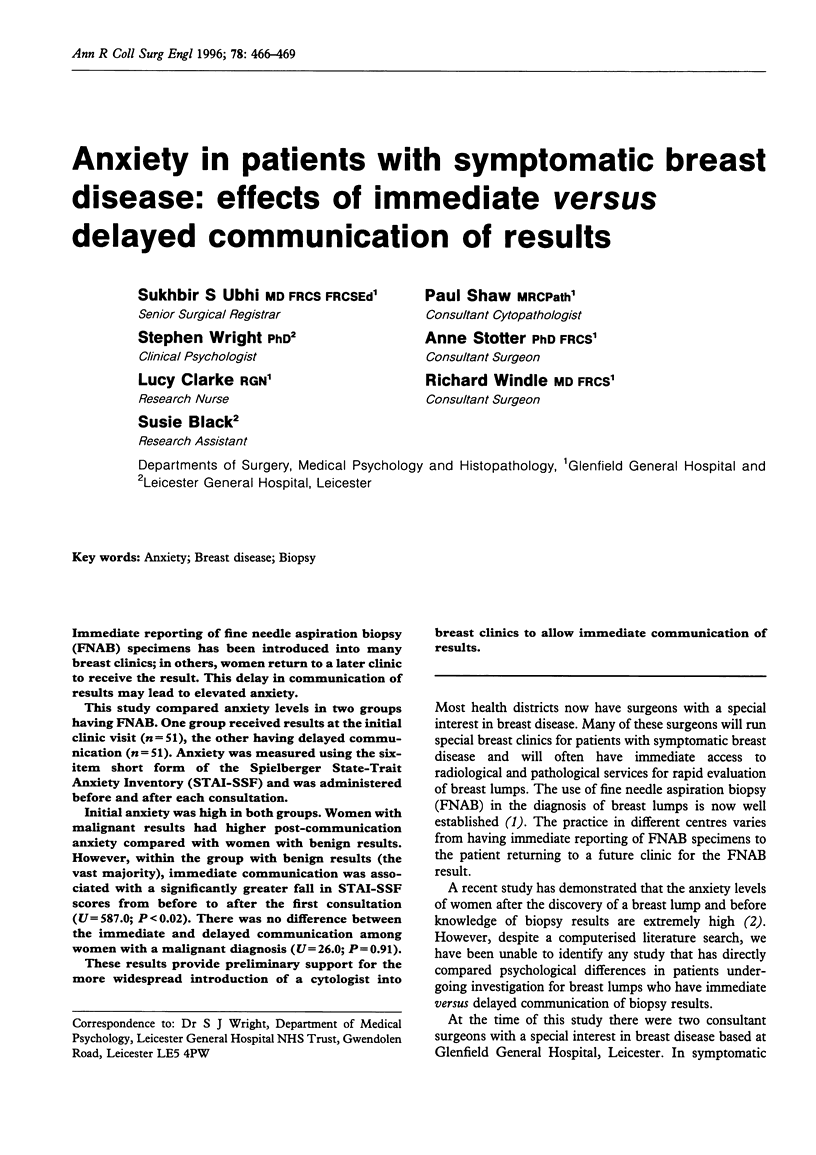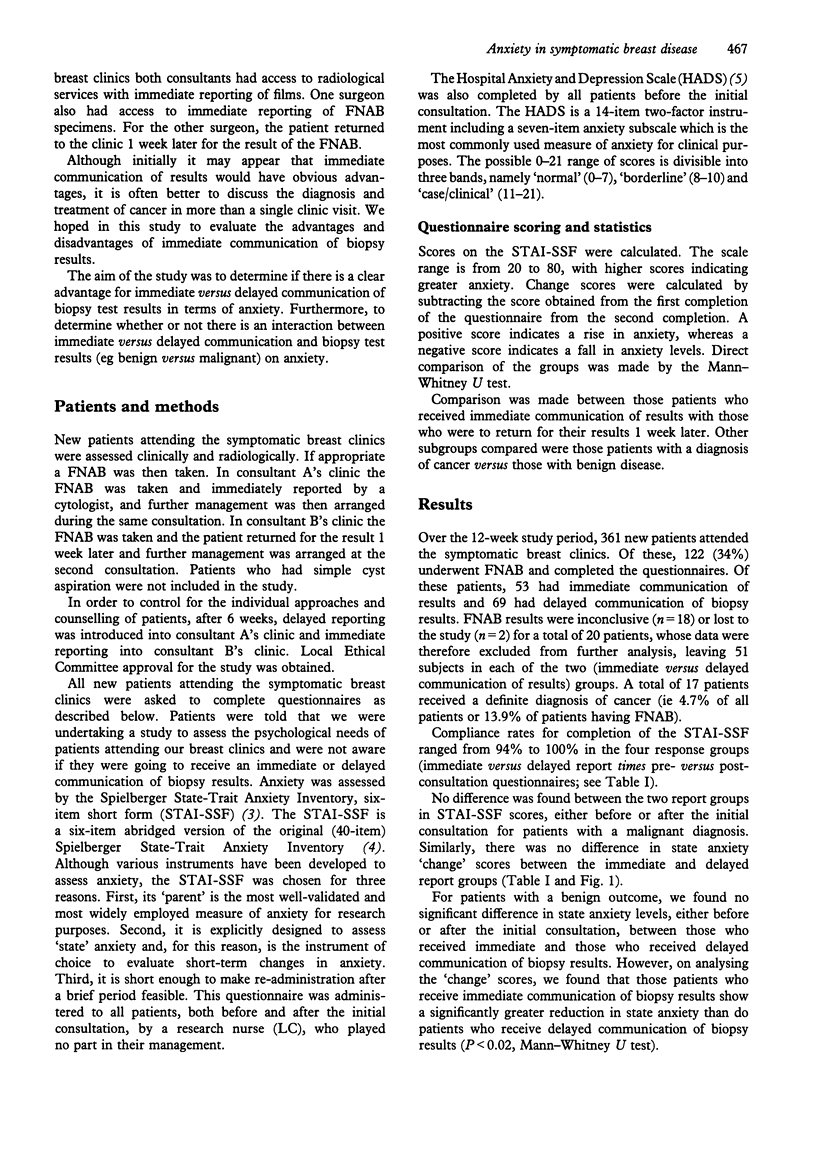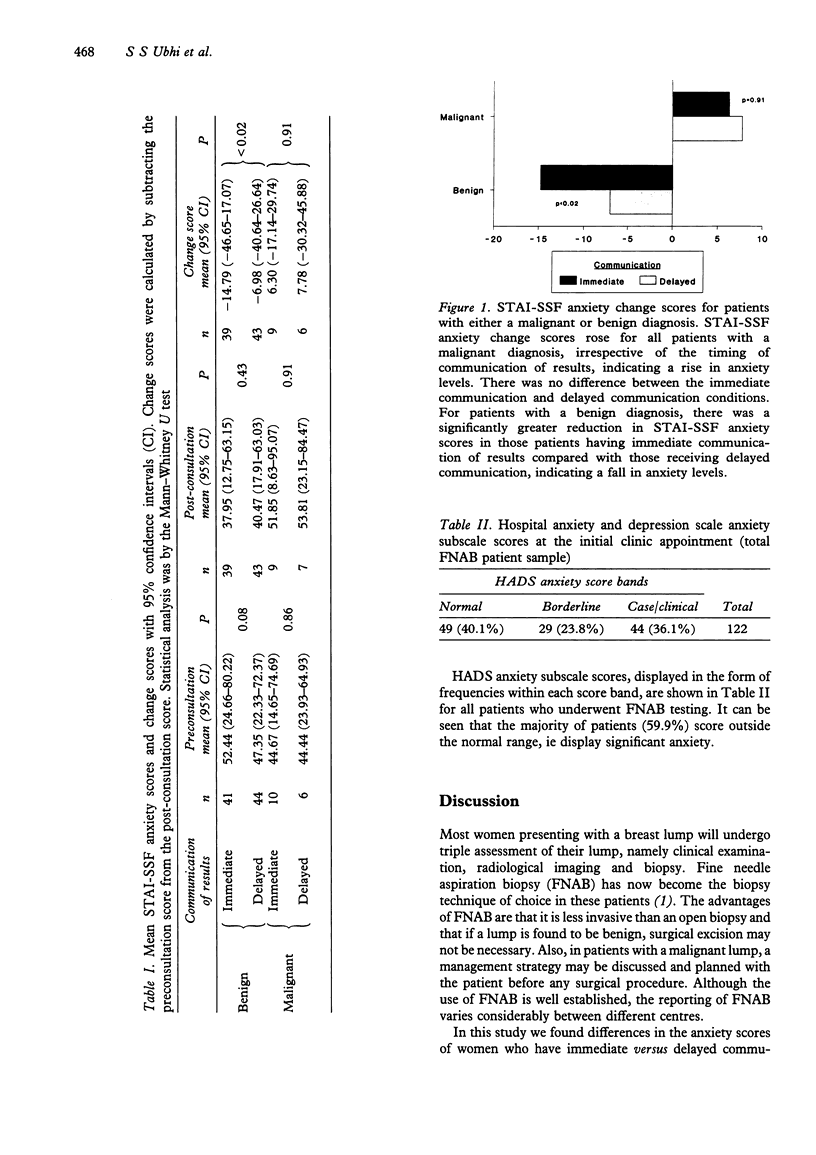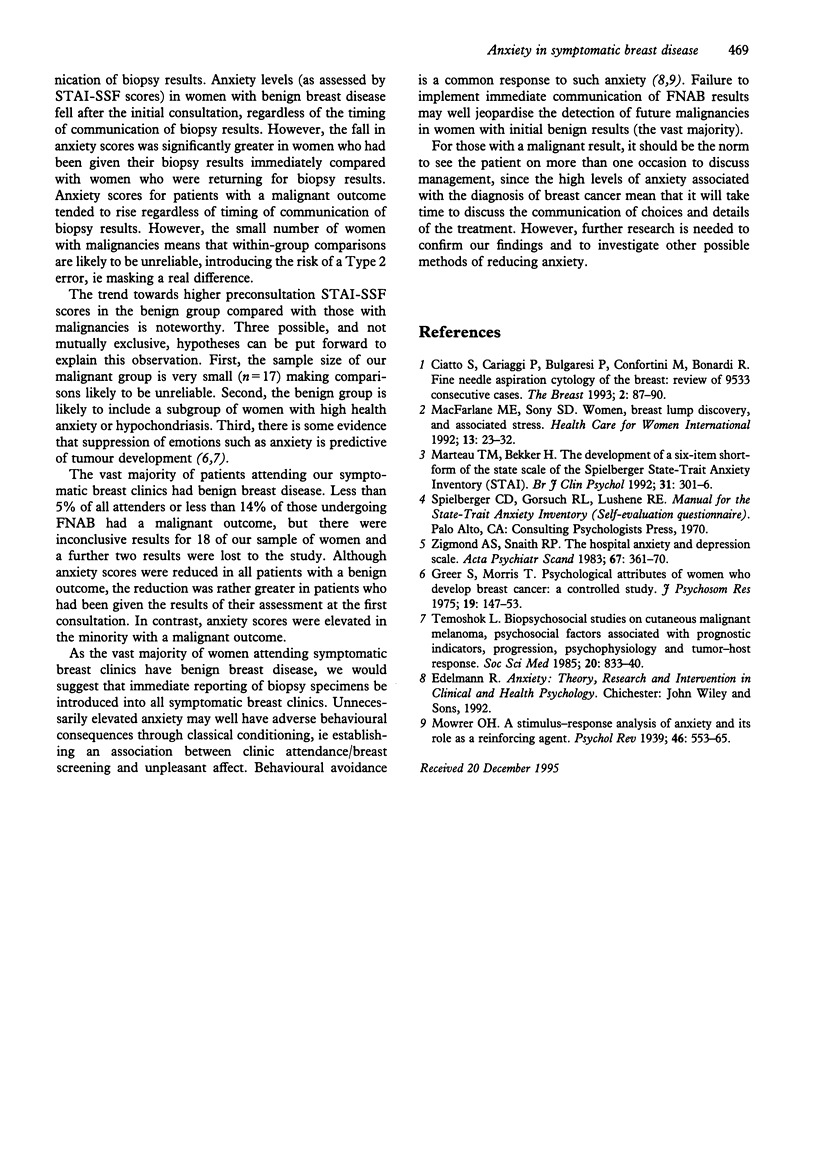Abstract
Immediate reporting of fine needle aspiration biopsy (FNAB) specimens has been introduced into many breast clinics; in others, women return to a later clinic to receive the result. This delay in communication of results may lead to elevated anxiety. This study compared anxiety levels in two groups having FNAB. One group received results at the initial clinic visit (n = 51), the other having delayed communication (n = 51). Anxiety was measured using the six-item short form of the Spielberger State-Trait Anxiety Inventory (STAI-SSF) and was administered before and after each consultation. Initial anxiety was high in both groups. Women with malignant results had higher post-communication anxiety compared with women with benign results. However, within the group with benign results (the vast majority), immediate communication was associated with a significantly greater fall in STAI-SSF scores from before to after the first consultation (U = 587.0; P < 0.02). There was no difference between the immediate and delayed communication among women with a malignant diagnosis (U = 26.0; P = 0.91). These results provide preliminary support for the more widespread introduction of a cytologist into breast clinics to allow immediate communication of results.
Full text
PDF



Selected References
These references are in PubMed. This may not be the complete list of references from this article.
- Greer S., Morris T. Psychological attributes of women who develop breast cancer: a controlled study. J Psychosom Res. 1975 Apr;19(2):147–153. doi: 10.1016/0022-3999(75)90062-8. [DOI] [PubMed] [Google Scholar]
- MacFarlane M. E., Sony S. D. Women, breast lump discovery, and associated stress. Health Care Women Int. 1992 Jan-Mar;13(1):23–32. doi: 10.1080/07399339209515975. [DOI] [PubMed] [Google Scholar]
- Marteau T. M., Bekker H. The development of a six-item short-form of the state scale of the Spielberger State-Trait Anxiety Inventory (STAI). Br J Clin Psychol. 1992 Sep;31(Pt 3):301–306. doi: 10.1111/j.2044-8260.1992.tb00997.x. [DOI] [PubMed] [Google Scholar]
- Temoshok L. Biopsychosocial studies on cutaneous malignant melanoma: psychosocial factors associated with prognostic indicators, progression, psychophysiology and tumor-host response. Soc Sci Med. 1985;20(8):833–840. doi: 10.1016/0277-9536(85)90338-7. [DOI] [PubMed] [Google Scholar]
- Zigmond A. S., Snaith R. P. The hospital anxiety and depression scale. Acta Psychiatr Scand. 1983 Jun;67(6):361–370. doi: 10.1111/j.1600-0447.1983.tb09716.x. [DOI] [PubMed] [Google Scholar]


